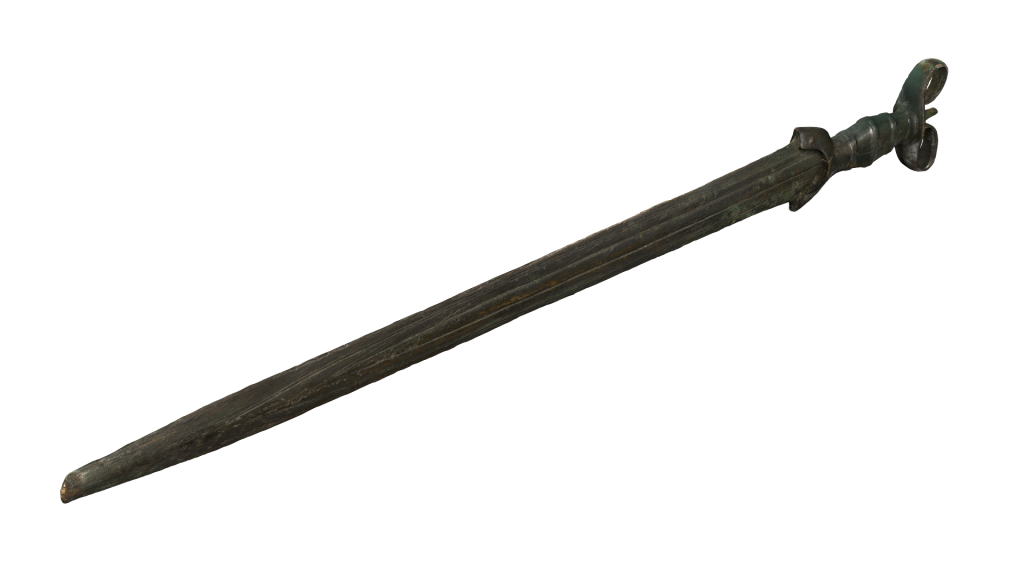
The sword from Nieczajna is the only Tarquinia [tarkwinia] type specimen found in Poland. The name originates from a town in Italy where a similar sword was previously discovered. Weapons of this type were produced in the North-Eastern Alps. The sword on display is an example of a double-edged weapon, meaning the blade is sharp on both edges. It perfectly fits the hand. X-rays of the sword attest to very high workmanship. The sword was cast in bronze. The hilt and blade are fixed with two rivets. The weapon was suitable for stabbing, yet it was too short and too light to make strong cuts. It was probably unfit for horse combat, but it was a proven weapon in on foot combat.